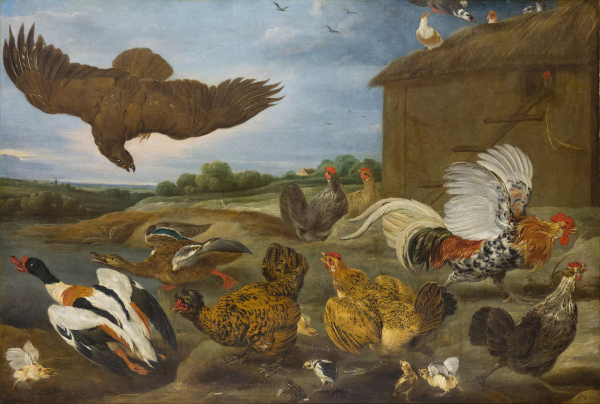Paul de Vos was born in the city of Hulst near Antwerp in the Netherlands during the first half of the 1590s. He was known for his depictions of hunting scenes, still lifes, and animal fights. Sadly little has been recorded about de Vos’ childhood. The artist was trained in Antwerp under the artists Denijs van Hove, David Remeeus, and Eduard Snayers, and joined the Guild of Saint Luke in 1620. De Vos worked in regular collaboration with several great Flemish masters including Peter Paul Rubens and Anthony van Dyck.
De Vos’ artistic career has sadly been overshadowed by that of his brother Cornelius (who had also trained under David Remeeus), and his brother-in-law Frans Snyders under whom Paul also trained. Several works now believed to be by Paul de Vos have been historically misattributed to his brother or Snyders. All three of these artists were masters of hunting scenes, paintings of birds, and still-life compositions. Paul de Vos rarely dated his works, which also creates confusion when trying to date his works. Another brother of De Vos’ - Jan - was also an artist.
Paul de Vos was prolific and created a sizable body of large-scale works on canvas as well as drawings and sketches in oils. His style emphasised animals’ fleeting movements and also captured the brutalities of animal fights which appealed to his hunt-loving patrons. In addition to his compositions of animals and still lifes, de Vos also excelled at painting domestic pantries and fable scenes.
The artist’s grand hunting scenes were popular in wealthy circles. Receiving patronage from elite members of 17th Century courts, including the head Council of Flanders in Madrid, the 3rd Count of Arenberg, the first Marqués de Leganés, Emperor Ferdinand III, and possibly King Philip IV. De Vos was commissioned to decorate Spanish royal residencies, and several of his works made in collaboration with Rubens for the Torre de la Parada are now held in Madrid’s Prado Museum.
As well as Rubens and van Dyck, de Vos also collaborated with Jan Wildens (the brother-in-law of de Vos’ brother Cornelius), Erasmus Quellinus II, Thomas Willeboirts Bosschaert, and Adriaen van Utrecht. De Vos would work in exchange with his fellow artists - regularly painting the animals within their landscapes, and having them assist with the painting of his landscape backdrops in return.
Frans Snyders married de Vos’ sister Margaretha in 1611, and 13 years later de Vos made his own match. In 1624 the artist married Isabella - the daughter of a notary - with whom he had 10 children. The pair’s son Peter Paul (born 1628) was named after Rubens, who was also the child’s godfather. The artist and his family were comfortably off and made investments in Antwerp real estate which stood them in good stead.
